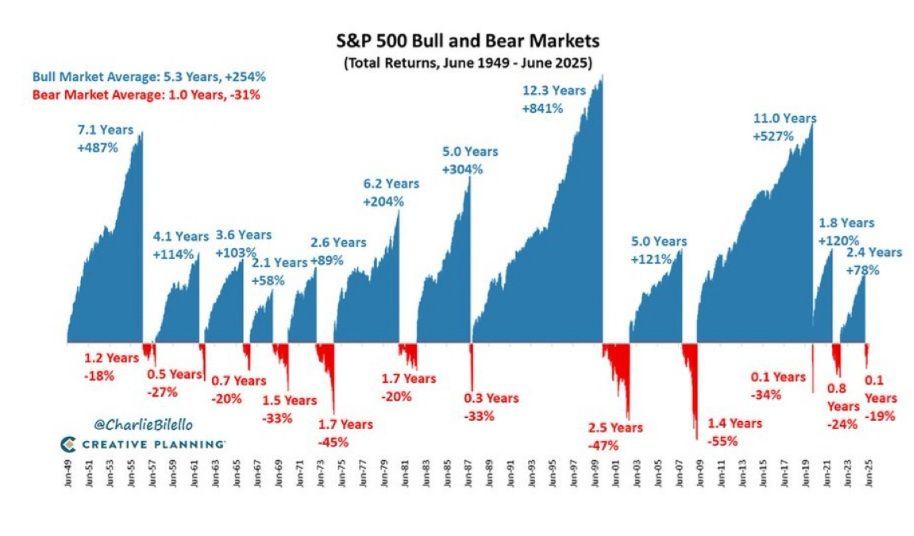PROSPERITY FOUNDATION
Education
Start Here
Your prosperity journey starts with self-knowledge and education.
Blog

At Prospera , we believe that financial planning is as much about human behavior as it is about markets. One of the most powerful, and costly, psychological biases affecting investors is loss aversion : the tendency to feel losses more intensely than gains of the same size. This simple truth helps explain why investors panic in downturns, hold on to losing stocks for too long, or underinvest in opportunities that could build long-term prosperity. What the Research Shows The concept of loss aversion was first formalized by psychologists Daniel Kahneman and Amos Tversky in their groundbreaking work on prospect theory . Their experiments revealed that most people need a potential gain of about twice the size of a potential loss before they will take a gamble . In mathematical terms, the “loss aversion coefficient” is around 2.25: losses loom more than twice as large as gains. Other research built on these insights: Disposition effect (Shefrin & Statman, Odean): Investors tend to sell winning positions too soon, locking in small gains, and hold on to losers too long, hoping to avoid the pain of realizing a loss. Myopic loss aversion (Benartzi & Thaler): Investors who monitor their portfolios too frequently see more short-term losses, and become more risk-averse than is rational for their long-term goals. These biases aren’t just theoretical, they show up in real portfolios every day. How It Shows Up in Real Life Loss aversion can distort investment decisions in predictable ways: Bailing at the bottom: In a market selloff, fear of further losses pushes investors to sell at the worst possible time, missing out when markets recover. “I’ll sell when I get back to even”: Anchoring on the original purchase price makes investors hold poor investments longer than they should, turning a financial decision into an emotional one. Over-checking accounts: Looking at daily fluctuations magnifies the emotional sting of losses, even if the long-term trajectory is positive. Together, these behaviors reduce returns and increase stress, an unfortunate combination. Why It Happens: A Quick Tour of Prospect Theory Prospect theory helps explain why even experienced investors fall into these traps. Unlike traditional finance, which assumes people make decisions based on overall wealth, prospect theory shows that we evaluate outcomes relative to a reference point, usually where we started. Here’s the key: For gains, the curve is concave, meaning each extra dollar gained feels a little less exciting than the one before. (Finding your first $100 feels amazing; the next $100 still feels good, but not twice as good.) For losses, the curve is convex, meaning each extra dollar lost hurts, but the sting of the first loss is sharper than the second. (Losing $100 feels awful; losing another $100 still hurts, but not double.) Most importantly, the curve is steeper for losses than for gains. Losing $100 hurts more than gaining $100 feels good. This simple shape of human psychology helps explain why investors chase risk to recover losses, yet shy away from opportunities when they’re already ahead. What You Can Do About It At Prospera , we help clients counter loss aversion not by asking them to ignore their emotions, but by designing structures and processes that protect them from themselves. A few guardrails: Write it down. A formal Investment Policy Statement sets rules for risk, allocation, and rebalancing, so choices are tied to the plan, not emotions. Reframe the reference point. Look at performance at the household and long-term level, not position by position. Automate discipline. Scheduled rebalancing ensures that you systematically buy low and sell high. At Prospera , we also use systematic models that remove the need to trade based on subjective factors or emotions. This guarantees that decisions are made consistently, separating the emotional impulse from the systematic process , and ensuring that discipline wins over fear or greed. Use a bucket framework. Our Plan Your Tranquility™ approach separates safe assets for near-term needs from long-term growth capital, reducing the urge to panic during downturns. Reduce the noise. Fewer portfolio check-ins mean fewer emotional triggers, helping you stick with the strategy. Harvest losses strategically. Tax-loss harvesting turns temporary losses into potential tax benefits, turning a bias into a tool. The Bottom Line Loss aversion is deeply human, and it won’t disappear. But it can be managed. The key is not willpower, but structure: building a plan that anticipates how you’ll feel in both good times and bad, and setting up rules and systems that keep you disciplined. At Prospera , our mission is to give clients confidence through every stage of their financial journey. Plan Your Tranquility™ means structuring both portfolios and decision-making processes so that short-term emotions don’t derail long-term prosperity. Have questions about your plan or how this may affect your portfolio? Talk to Prospera . We’re here to help you stay grounded, informed, and focused on what matters. www.prospera.investments This communication is provided for informational purposes only and does not constitute investment advice, a recommendation, or an offer to buy or sell any security. Investors should consult their financial advisor to assess whether any investment is appropriate for their individual circumstances.

At Prospera , we’ve seen firsthand how even successful professionals, tech executives, entrepreneurs, and high earners, can fall into subtle traps that quietly erode their wealth. These aren’t dramatic mistakes like reckless speculation or chasing fads. Instead, they’re the quieter, more “normal” habits that, left unchecked, chip away at financial security and limit long-term potential. The truth is: earning more is only half the equation. Protecting, growing, and aligning wealth with your life goals requires avoiding the hidden pitfalls. Our Plan Your Tranquility™ framework is designed to do exactly that, help you achieve prosperity with peace of mind. Here are five silent wealth killers we see most often: 1. Overloading on Fixed Income Bonds and CDs feel safe. They provide predictable returns and a sense of stability. But for many successful professionals, leaning too heavily on fixed income is a mistake. While fixed income belongs in every portfolio, it’s designed for ballast, not for growth. If too much of your wealth is locked into bonds, you’re sacrificing compounding potential. Over decades, that “safety” can cost you hundreds of thousands, even millions, in missed growth. And in inflationary environments, fixed income can actively erode purchasing power. Prospera Insight : We position fixed income thoughtfully, but always as a complement to equities and growth assets. Your plan should balance security with long-term wealth creation. 2. Having Either Too Much (or Too Little) Cash Cash is deceptively tricky. Some people hoard it endlessly, missing opportunities, while others hold dangerously thin reserves. Both extremes can harm long-term outcomes. Without enough liquidity, every unexpected expense, job transition, home repair, health event, forces you into debt or poor-timing investment sales. With too much, inflation silently eats away at your savings, robbing you of growth. Prospera Insight : We help clients define the right level of liquidity for both resilience and opportunity, typically a healthy emergency fund plus smart planning for near-term goals. Beyond that, your cash should be put to work. 3. Only Investing for Retirement (or Not at All) Retirement accounts like 401(k)s are excellent tools, but they’re not the whole picture. Many successful professionals end up “401(k) rich, cash poor,” or worse, never build wealth outside of their paycheck at all. Life doesn’t wait until age 65. Buying a home, starting a company, taking a sabbatical, or funding your kids’ education, all require capital outside retirement vehicles. Limiting your wealth strategy only to retirement accounts (or avoiding investing entirely) leaves you underprepared for the stages of life in between. Prospera Insight : We structure wealth in buckets. Those buckets are built around risk and resilience, not just timelines. Having them in place allows you to fund life as it happens. 4. Tech Tunnel Vision This is especially common for tech professionals. You’re paid partly in stock, you understand your industry deeply, and you naturally invest in what you know: more tech . It can work well, until it doesn’t . These are the kinds of situations that can derail a whole plan because while investing in more tech may seem like the best move during bull markets, it also leads to much sharper losses in bad years and bear markets. Prospera Insight : Diversification is about protecting you from being over-exposed to the same ecosystem that already provides your income. We help you broaden your portfolio without losing the upside potential of the industry you know best. 5. Company Stock Concentration Many executives and employees accumulate a massive percentage of their net worth in employer stock, often 50% or more. It feels like betting on yourself, but it’s one of the riskiest moves you can make. One bad year, a failed product launch, or a sudden industry downturn can erase years of paper wealth overnight. Think about how many “unbeatable” companies have stumbled in just the past two decades. Prospera Insight : Wealth is often built through concentration, but it’s preserved through diversification. At Prospera , we manage systematic portfolios and plan diversification with this goal in mind, protecting your wealth for the long run. Avoiding Mistakes, Building Tranquility The encouraging part? All five of these mistakes are fixable. And none of them require drastic changes, just awareness, a structured plan, and small adjustments that compound into massive differences over time. At Prospera , we believe financial planning is about more than just numbers. It’s about building prosperity with clarity, balance, and confidence across every stage of life. Successful professionals already have the income, our role is to ensure those earnings are transformed into durable, long-lasting wealth. That’s what Plan Your Tranquility™ means: not only achieving prosperity, but doing it in a way that gives you peace of mind. Have questions about your plan or how this may affect your portfolio? Talk to Prospera . We’re here to help you stay grounded, informed, and focused on what matters. www.prospera.investments This communication is provided for informational purposes only and does not constitute investment advice, a recommendation, or an offer to buy or sell any security. Investors should consult their financial advisor to assess whether any investment is appropriate for their individual circumstances.

At Prospera , we pay close attention not just to investment strategies, but also to the psychology that shapes how investors behave. A recent episode of The Long View podcast, hosted by Morningstar’s Christine Benz and Amy Arnott, featured Nick Murray, advisor and author of several books, including Simple Wealth and This Time Isn’t Different . Murray’s reflections reminded us of a core truth: the greatest obstacle to investment success isn’t the market or the economy, it’s the investor’s own behavior. Murray put it plainly: “The dominant determinant of real-life investor outcomes is neither the economy nor the markets, but investor behavior. The investor is hardwired to be his own worst enemy.” 1. The Price–Value Confusion In everyday life, lower prices mean greater value. We look for sales, wait for discounts, and flock to Black Friday or Cyber Monday promotions because we intuitively know we’re getting more for less. But investing reverses this logic: When stock prices fall, investors see more risk, not more value. When stock prices rise, investors see more potential, not less. As Murray puts it: “The entirety of the United States shops on Black Friday because prices are lowered… except in one thing. And of course, it’s investments.” This inversion of logic leads to destructive behavior: buying high in euphoria and selling low in fear. 2. Crises Always Feel Different History shows that markets regularly endure painful setbacks: the dot-com collapse, the global financial crisis, the COVID crash, tariff shocks, inflation spikes, and more. Each crisis has its own trigger, and each feels “unprecedented” in the moment. That uniqueness fuels the belief that this time really is different. Murray warns against this mindset: “The essential human response, the four-word death song of the equity investor is ‘this time it’s different.’” The reality is that while every crisis looks unique, the pattern of recovery is remarkably consistent. Markets rebound, innovation reasserts itself, and long-term growth resumes. Yet because of human wiring, investors often panic out of equities just before the rebound begins. Client Story #1 : In March 2020, during the steep COVID downturn, one client was ready to move everything to cash, fearing that the world economy would collapse. By holding steady to their long-term plan instead, that same client recovered losses within months and ultimately saw their portfolio grow to new highs. The “uniquely bad” crisis was painful in the moment, but discipline made all the difference. 3. Emotions Override Rational Plans Even with a carefully crafted plan, emotions often take control: Fear → Panic selling in downturns. Greed/FOMO → Chasing hot sectors or bubbles. This is why Murray argues that advisors add their greatest value not through forecasts or clever trades, but by keeping clients disciplined: “You make a plan once. Assuming the goals don’t change, you never change the portfolio in reaction to the markets.” At Prospera , we frame this as Plan Your Tranquility™ . The plan (not the market cycle) is the compass. Our role is to keep clients aligned with their long-term goals even when emotions run high. Client Story #2 : In 2021, another client, was eager to load nearly all of his savings into a handful of fast-rising technology stocks. He worried about “missing out.” We encouraged him to keep those positions modest while maintaining a diversified portfolio. When those stocks later dropped sharply, he was grateful for the balance that preserved his wealth and kept his long-term plan intact. 4. The Psychology of Loss Aversion Behavioral finance research (from Daniel Kahneman and Amos Tversky) shows that people feel losses twice as strongly as gains. This “loss aversion” means that a temporary drawdown, even one that is normal in equities, feels unbearable. Murray often reminds clients and advisors that long-term equity investing comes with a cost: “About every five years during your equity investing career… some howling typhoon will slam into the equity market and take it down by a third.” These drawdowns are not anomalies, they are part of the price of admission for long-term compounding. Yet because investors are hardwired to avoid loss, they are tempted to abandon equities just when the best opportunities arise. 5. Why (Real) Advisors Matter Because these instincts are so deeply ingrained, most investors cannot overcome them alone. Murray believes this is the essence of financial advice: “There is no higher value function of a wealth manager than doing the things that people can never do unaided in bad markets.” In other words, the real work of a fiduciary advisor is coaching clients through their worst instincts . That means helping them avoid panic when markets fall and resist euphoria when markets soar. At Prospera , this is central to how we serve clients. We don’t cheer when the market is up or panic when it’s down. Instead, we keep the focus on your plan, your goals, and the discipline required to achieve them. The Takeaway Nick Murray’s message is a sobering one: investors are hardwired to sabotage their own success. They confuse price with value, believe every crisis is different, and let emotions override rational plans. Left unchecked, these instincts drive poor decisions ,and undermine long-term compounding. But the flip side is empowering: with the right framework and guidance , investors can rise above their wiring. A clear plan, a disciplined portfolio, and a trusted advisor can help you act rationally when your instincts push you toward mistakes. At Prospera , our mission is to provide exactly that kind of guidance. Because Plan Your Tranquility™ is about more than investing, it’s about giving you the confidence to navigate markets without being ruled by fear or fomo. www.prospera.investments info@prospera.investments Disclaimer: This material is provided for informational purposes only and does not constitute financial, tax, or legal advice. Past performance is not indicative of future results. Please consult your own financial advisor, accountant, or attorney before making any decisions related to your personal finances.

At Prospera , we often hear the same line when speaking with tech executives and entrepreneurs about financial planning: “I understand what a financial plan is now, and it sounds great. But not for me yet. I have too many things in motion. Once I figure them out, then I’ll plan.” It sounds reasonable. After all, life is full of big decisions and moving parts. But the paradox is this: the very reasons people give for delaying financial planning are the reasons they need one the most. Why People Say They Delay Planning The surface-level reasons are consistent and familiar: “I might want to buy a house in a couple of years, but I’m not sure yet.” “My kids may be going to college soon, and I don’t know if it will be here or abroad.” “I’m waiting for my stock options to vest before I can decide.” “I expect liquidity from selling my company, but I don’t know when.” These are perfectly logic real-life examples, but they lead people to believe that financial planning is something to be done once there is more clarity, once the future looks settled. Why People Really Delay Planning Beneath those surface explanations, psychology is often the real driver. Fear of commitment . A plan feels binding, as though choosing one path closes off others. Fear of exposure . A plan reveals numbers, tradeoffs, and truths that many would rather avoid. Optimism bias . People assume tomorrow will be simpler, that they’ll “get to it later,” even though later looks much the same as now. Avoidance . By not planning, people can postpone confronting uncomfortable realities about spending, savings, or risks. So while people say they delay planning because of external circumstances, they often really delay because of internal resistance. The Cost of Living Without a Plan Life without a plan is not neutral, it’s stressful, reactive, and sometimes dangerous. Without a plan, every financial decision is made in the short term, under pressure: Constant anxiety . Worry about the future becomes a background noise you can’t escape. Decision paralysis . Fear of making a mistake leads to doing nothing, missing opportunities or delaying diversification. Impulse and reaction . When you do act, it’s often reactive and short-term, not strategic. Living too lean . Some people underspend, afraid to enjoy life, living unnecessarily far below their means. Living too large . Others overspend, especially during peak earning years, because there’s no framework reminding them that today’s income must also support their future self. Investing without a plan . This often means chasing returns when markets are hot, selling in panic when markets fall, concentrating too much in employer stock or single bets, or holding too much idle cash out of fear. The result: lower returns, higher stress, and missed compounding. Lack of perspective . Without a plan, it’s almost impossible to zoom out and think long term. The urgent always overwhelms the important. This is why living without a plan is not only inefficient, it’s exhausting . What a Plan Really Brings A financial plan doesn’t eliminate uncertainty. But it transforms it, from chaos into clarity. With a plan, you gain: Tranquility . A roadmap that quiets the “what if” anxiety and shows you how you’ll navigate uncertainty. Preparedness . You can run scenarios and already know your moves when events unfold. Investment optimization . Instead of investing haphazardly, you invest correctly, with structure and purpose. A plan helps you: Segment money into different mandates: Safety: reserves that protect you from shocks. Growth: mid-term assets positioned for compounding. Aspirational: long-term capital seeking higher returns. Match each pool of money to time horizons and goals. Avoid the typical mistakes, panic selling, chasing fads, holding excess cash, that investors without plans routinely make. Build discipline into your allocation so that investing becomes systematic, not emotional. Time alignment . Every dollar has a job and a horizon. No more mixing money needed next year with money meant for retirement. Freedom and intentionality . Instead of reacting, you can choose. Instead of hoping, you can know. At Prospera , we call this mindset Plan Your Tranquility™ . It’s not about predicting the future. It’s about being ready for any future. The Core Lesson Delaying financial planning feels logical, but it’s actually risky. Without a plan, you live in stress , reaction, and chance. With a plan, you gain clarity, resilience, and the ability to adapt, regardless of outcomes . A good outcome without a plan is luck. A good or bad outcome with a plan is strategy. Financial planning isn’t for later, it’s for now. Prospera Insight When you delay planning, what you’re really doing is outsourcing your future to luck and randomness. A financial plan is not just a spreadsheet with numbers. It’s a strategy for life , a tool that balances today’s joy with tomorrow’s security, aligns spending with purpose, and ensures your peak earning years build both your present and your future self. With a plan, you don’t just invest, you invest correctly. You don’t just save, you save with intention. You don’t just hope, you prepare. At Prospera , we believe tranquility doesn’t come from waiting until life “settles.” It comes from planning today, so you’re prepared for whatever tomorrow brings. Ready to Plan Your Tranquility? If you’ve been waiting for “the right time” to start your financial plan, know that the right time is now. At Prospera , we specialize in helping tech executives and entrepreneurs bring clarity to uncertainty and confidence to decision-making. Let’s start building your plan today, so you can Plan Your Tranquility™ for tomorrow. www.prospera.investments info@prospera.investments Disclaimer: This material is provided for informational purposes only and does not constitute financial, tax, or legal advice. Past performance is not indicative of future results. Please consult your own financial advisor, accountant, or attorney before making any decisions related to your personal finances.
Give me more
Continue your journey by clicking the links bellow.






